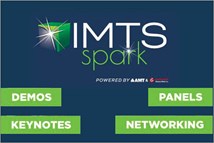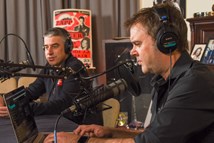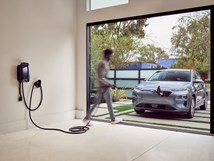High-Speed Rail Zooms to Forefront of Green New Deal Debate
The so-called “Green New Deal” resolution introduced in Congress earlier this month calls for investing in a high-speed rail (HSR) network throughout the U.S. to help reduce greenhouse gas emissions.
#regulations
The so-called “Green New Deal” resolution introduced in Congress earlier this month calls for investing in a high-speed rail (HSR) network throughout the U.S. to help reduce greenhouse gas emissions.
Some analysts have dismissed the controversial proposal, introduced by Rep. Alexandria Ocasio-Cortez (D-N.Y.) and Sen. Ed Markey (D-Mass.), for being grandiose, impractical and radical. This includes ridiculing the suggestion that HSR could be built out to the point where “air travel stops becoming necessary.”

But proponents maintain that HSR can compete with planes on cost and time when traveling 600 miles or less, while providing significant environmental benefits. They point out that such trains already are widespread in parts of Europe and Asia—China has 15,000 miles of HSR track and aims to double this by 2030.
Transportation was the largest source of energy-related carbon dioxide emissions in the U.S. in 2018, topping the power industry for the third straight year. But trains tend to be one of the most efficient forms of transportation: A recent report by the International Energy Assn. shows that HSR accounts for 8% of motorized passenger travel and 7% of freight, but only 2% of energy consumption.
A separate study published in Journal of Advanced Transportation last year asserts that trains have provided a “remarkable advantage” over planes in terms of CO2 emissions in Europe. And such benefits stand to increase as electric trains move to use electricity derived from wind and solar power sources.

However, costs to develop the supporting infrastructure can be daunting. California recently dialed back plans to create an HSR line between Los Angeles and San Francisco when costs for the project ballooned to $77 billion.
But projects are moving forward in other areas, such as the Brightline system in Florida that connects Miami and West Palm Beach. There also are plans for HSR corridors in Texas, New England and the Midwest.
Amtrak opened its Acela Express line, which runs between Washington, D.C., and Boston, in late 2000. Speeds are relatively slow—averaging about 70 mph and topping out at 150 mph—compared with bullet trains in Asia that can reach more than 250 mph.
While short on details, the Green New Deal calls for the U.S. to be carbon neutral by 2030. In addition to transportation, the resolution addresses everything from clean air and water to affordable housing, education, healthcare, healthy food and “sustainable” wages.
The Green New Deal resolution can be viewed HERE.
RELATED CONTENT
-
Ford Copies Nature
As Nature (yes, capital N Nature) has done a pretty good job of designing things, it is somewhat surprising that Man (ditto) doesn’t follow Nature’s lead more often when it comes to designing objects.
-
Engineering the 2019 Jeep Cherokee
The Jeep Cherokee, which was launched in its current manifestation as a model year 2014 vehicle, and which has just undergone a major refresh for MY 2019, is nothing if not a solid success.
-
Jeeps Modified for Moab
On Easter morning in Moab, Utah, when the population of that exceedingly-hard-to-get-to town in one of the most beautiful settings on Earth has more than doubled, some people won’t be hunting for Easter eggs, but will be trying to get a good look at one of the vehicles six that Jeep has prepared for real-life, fast-feedback from the assembled at the annual Easter Jeep Safari.








